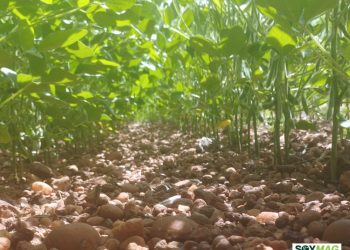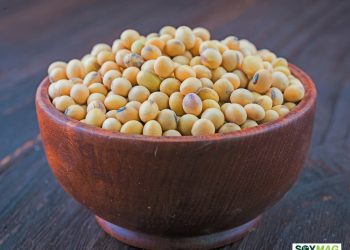The market for plant-based meat alternatives is no longer a niche for vegans and vegetarians. In 2025, it is a mainstream food category experiencing rapid evolution, and soy remains its most crucial ingredient. While new protein sources are emerging, soy’s unique combination of functionality, cost-effectiveness, and nutritional value keeps it at the forefront of the industry. For R&D professionals, the focus has shifted from simply creating a meat substitute to refining the sensory experience, enhancing nutritional value, and meeting consumer demands for a “cleaner” label.
This comprehensive analysis explores the latest formulation trends and consumer insights shaping the use of soy in meat alternatives in 2025.

Consumer Insights 2025: The Rise of the Discerning Flexitarian
Market research from 2025 reveals a more nuanced consumer base for plant-based alternatives. The initial wave of curiosity is over, and today’s consumer is more discerning and has a set of clear expectations that food manufacturers must meet.
- Taste and Texture Remain King: While health and environmental concerns are a key entry point, taste and texture are the ultimate deciding factors for repeat purchases. Consumers are no longer satisfied with grainy, dry, or “spongy” products. The challenge for R&D is to create a product that can accurately mimic the mouthfeel, chewiness, and juiciness of real meat.
- The “Clean Label” Imperative: A major trend for 2025 is the consumer’s growing skepticism of “artificiality.” A significant portion of consumers find long, unrecognizable ingredient lists a barrier to purchase. This is driving a push for simpler, more natural formulations with fewer additives, preservatives, and processed ingredients.
- Beyond Imitation: While the market for meat alternatives is still robust, a growing segment of consumers (with a 14-percentage-point difference over those who want imitations) wants plant-based foods to be standalone products in their own right, not just imitations of meat or dairy. This opens up new avenues for innovation that celebrate the unique characteristics of plants.
- A Focus on Nutrition: Consumers are increasingly looking for protein products that offer a complete nutritional profile. Research from ADM’s 2025 Alternative Protein Landscape Report shows that a majority of consumers want plant-based proteins that are comparable to animal proteins in terms of a complete amino acid profile. They also look for added benefits, like muscle building and healthy aging.
These insights show that the plant-based market in 2025 is a far more sophisticated space than it was just a few years ago.
Soy in Meat: How Soy is Adapting
Soy in meat is the most widely used protein in meat alternatives, thanks to its exceptional functional properties. As the market matures, R&D is leveraging new technologies and a deeper understanding of soy in meat to meet evolving consumer demands.

1. High-Moisture Extrusion: The Key to Texture
The most significant technological advancement in soy in meat alternatives is high-moisture extrusion (HME). Unlike traditional low-moisture extrusion, which produces a dry, spongy protein that needs to be rehydrated, HME uses a high-moisture process to create a fibrous structure that closely mimics the muscle fibers of meat. This technology, which requires a significant capital investment, is the primary reason why soy in meat products can now achieve textures similar to chicken breasts or steak. For a consumer, this translates to a better “bite” and a more satisfying mouthfeel, overcoming one of the biggest historical barriers to acceptance.
2. Blending and Hybrid Formulations
While soy protein isolate (SPI) and soy protein concentrate (SPC) are the workhorse ingredients, R&D is increasingly using them in conjunction with other proteins to create superior products.
- Soy + Pea Protein: This is the most common hybrid blend. Pea protein offers a firm texture, while soy in meat provides excellent binding and emulsification. Combining the two creates a more balanced amino acid profile and a more complete protein, a key demand for 2025 consumers.
- Soy + Mycoprotein or Fungi-based Proteins: Some companies are experimenting with hybrid products that combine plant proteins with fungi-based proteins. These blends can offer improved texture, a more complete nutritional profile, and a unique flavor.
- Soy + Lipid Structuring: Fat is crucial for creating the juiciness and flavor of meat. R&D is using new technologies to structure lipids from coconut and sunflower oil into “marbled” fats that mimic the fat in animal meat. Soy’s emulsifying properties are key in ensuring these lipids are properly integrated into the final product.
3. Overcoming Off-Flavors and Anti-Nutritional Factors
Soybeans can have a noticeable “beany” off-flavor that has historically been a challenge for formulators. Today’s R&D professionals are using advanced techniques to address this:
- Enzymatic Hydrolysis: This process uses enzymes to break down proteins, which can improve digestibility, reduce bitterness, and neutralize unwanted flavors.
- Fermentation: Fermentation is a natural process that not only enhances flavor with savory, “umami” notes but can also improve the digestibility of soy protein by breaking down some of its complex carbohydrates. This aligns with the consumer demand for more natural and traditional processing methods.
- Clean-Label Functionality: Instead of chemical additives, formulators are using natural binders like chia seeds, flax, and psyllium husk to improve texture and water retention.

4. Advancing with Technology: AI and 3D Printing
Looking ahead, R&D is exploring new frontiers to push the boundaries of soy-based meat alternatives.
- AI-powered Formulation: Companies are using artificial intelligence to optimize ingredient ratios and predict the final texture and flavor of a product. This can dramatically speed up the R&D process and lead to more consistent, high-quality products.
- 3D Printing: While still in its early stages, 3D printing offers the ultimate in customization. Researchers have successfully used textured soy protein to 3D print steak-like foods with a fibrous texture. This technology has the potential to create new forms and textures that are impossible with traditional manufacturing methods.
In 2025, soy remains a dominant force in the plant-based meat alternative market. But its role is evolving. It is no longer just a cheap protein source; it is a high-tech, functional ingredient that is being meticulously refined to meet the demands of a more sophisticated consumer base. The future of soy in this market lies in its ability to deliver superior sensory attributes, a transparent and clean label, and a complete nutritional profile that can compete head-to-head with its animal-based counterparts. By leveraging new technologies and a deep understanding of consumer insights, soy is poised to continue its reign as the world’s most important plant protein.









